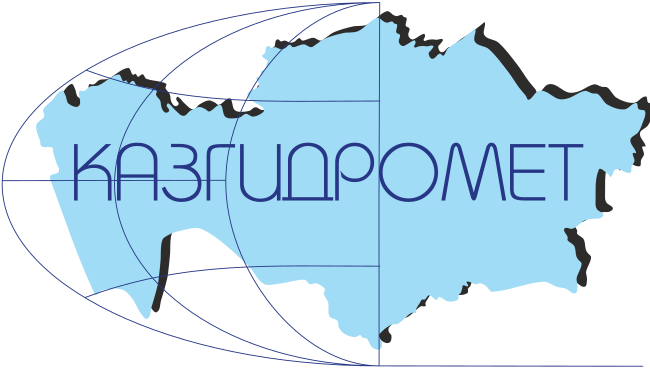THE USE OF RADAR AND OPTICAL REMOTE SENSING DATA TO ESTIMATE THE NUMBER OF AFFECTED HOUSES, THE AREA AND BOUNDARIES OF FLOOD ZONES
DOI:
https://doi.org/10.54668/2789-6323-2024-112-1-144-160Keywords:
Infrared range, polarization, remote sensing, spring floods, border and area of floodingAbstract
The article presents the result of determining the flooding zone and the affected houses and buildings of the town of Atbasar from the spring floods of 2017. This result was obtained using three available remote sensing data Sentinel-2A, Landsat-8 and Sentinel-1B of medium spatial resolution. At the first stage, remote sensing data of the near, short-wave, thermal infrared (IR) range and polarization by contrast level were visually analyzed. Images were selected based on a high level of contrast between two classes: a water object and a non-water object (land). At the second stage, threshold values were calculated from a sample of pixels related to water bodies, and then binary images were created. In the third stage, binary images were logically summarized to eliminate the cloud effect and find the resulting binary image of the flood zone from spring floods. In the fourth stage, the resulting binary image was superimposed on the GIS data of the town of Atbasar, where the locations and the number of affected houses and buildings were located. According to this study, it was found that more than 200 country houses were flooded in the northern part, and 9 houses in the eastern part of the town of Atbasar. According to media reports and official bodies, the number of affected houses in Atbasar was about 400. The number of affected houses found by the method of logical summation with three remote sensing data was 52%. The accuracy of the location can be significantly improved by using high spatial resolution remote sensing data. The results of this study may be useful for the emergency service, local government agencies, and insurance companies in assessing damage from spring floods.
References
Arkhipkin, O. P., L. F. Spivak, and G. N. Sagatdinova. 2010. "Development of Flood Space Monitoring in Kazakhstan." Geoscience and Remote Sensing, New Achievements: 419-436.
Benoudjit, A., and R. Guida. 2019. "A Novel Fully Automated Mapping of the Flood Extent on SAR Images Using a Supervised Classifier." Remote Sensing 11 (7).
Du, J., H. H. Zhou, P. A. Jacinthe, and K. S. Song. 2023. "Retrieval of lake water surface albedo from Sentinel-2 remote sensing imagery." Journal of Hydrology 617.
Farhadi, H., and M. Najafzadeh. 2021. "Flood Risk Mapping by Remote Sensing Data and Random Forest Technique." Water 13 (21).
Ghofrani, Z., V. Sposito, and R. Faggian. 2019. "Improving flood monitoring in rural areas using remote sensing." Water Practice and Technology 14 (1): 160-171.
Guo, J., X. P. Wang, B. Liu, K. Liu, Y. Zhang, and C. F. Wang. 2023. "Remote-Sensing Extraction of Small Water Bodies on the Loess Plateau." Water 15 (5).
Huang, M. M., and S. G. Jin. 2020. "Rapid Flood Mapping and Evaluation with a Supervised Classifier and Change Detection in Shouguang Using Sentinel-1 SAR and Sentinel-2 Optical Data." Remote Sensing 12 (13).
Kadapala, B. K. R., and K. A. Hakeem. 2023. "Region-Growing-Based Automatic Localized Adaptive Thresholding Algorithm for Water Extraction Using Sentinel-2 MSI Imagery." Ieee Transactions on Geoscience and Remote Sensing 61.
Kuntla, S. K., and P. Manjusree. 2020. "Development of an Automated Tool for Delineation of Flood Footprints from SAR Imagery for Rapid Disaster Response: A Case Study." Journal of the Indian Society of Remote Sensing 48 (6): 935-944.
Lammers, R., A. Li, S. Nag, and V. Ravindra. 2021. "Prediction models for urban flood evolution for satellite remote sensing." Journal of Hydrology 603.
Li, A. M., X. Y. Yan, and X. Kang. 2023. "Applicability study of four atmospheric correction methods in the remote sensing of lake water color." Geocarto International 38 (1).
Nikolaos, S., K. Kleomenis, D. Elias, S. Panagiotis, L. Panagiota, P. Vagelis, and C. Christos. 2019. "A Robust Remote Sensing-Spatial Modeling-Remote Sensing (R-M-R) Approach for Flood Hazard Assessment." Spatial Modeling in Gis and R for Earth and Environmental Sciences: 391-410.
Ongdas, N., F. Akiyanova, Y. Karakulov, A. Muratbayeva, and N. Zinabdin. 2020. "Application of HEC-RAS (2D) for Flood Hazard Maps Generation for Yesil (Ishim) River in Kazakhstan." Water 12 (10).
Pivaev, P. D., V. N. Kudryavtsev, E. A. Balashova, and B. Chapron. 2020. "SAR Imaging Features of Shallow Water Bathymetry." Physical Oceanography 27 (3): 290-304.
Quang, D. N., N. K. Linh, H. S. Tam, and N. T. Viet. 2021. "Remote sensing applications for reservoir water level monitoring, sustainable water surface management, and environmental risks in Quang Nam province, Vietnam." Journal of Water and Climate Change 12 (7): 3045-3063.
Sebastianelli, A., M. P. Del Rosso, S. L. Ullo, A. Radius, C. Clemente, D. Orlando, F. Biondi, and J. Wheeler. 2021. "A filtering problem: SAR speckle filtering." Artificial Intelligence Applied to Satellite-Based Remote Sensing Data for Earth Observation 98: 221-236.
Spivak, L., O. Arkhipkin, V. Pankratov, I. Vitkovskaya, and G. Sagatdinova. 2004. "Space monitoring of floods in Kazakhstan." Mathematics and Computers in Simulation 67 (4-5): 365-370.
Taloor, A. K., P. K. Thakur, and M. Jakariya. 2022. "Remote sensing and GIS applications in water science." Groundwater for Sustainable Development 19.
Wang, L. M., G. W. Jin, and X. Xiong. 2023. "Flood Duration Estimation Based on Multisensor, Multitemporal Remote Sensing: The Sardoba Reservoir Flood." Journal of Earth Science 34 (3): 868-878.
Zou, S., J. Abuduwaili, J. L. Ding, W. L. Duan, P. De Maeyer, and T. Van De Voorde. 2020. "Description and Attribution Analysis of the 2017 Spring Anomalous High Temperature Causing Floods in Kazakhstan." Journal of the Meteorological Society of Japan 98 (6): 1353-1368.
Тюменев С.Д. Водные ресурсы и водообеспеченность территории Казахстана: Учебник. – Алматы: КазНТУ, 2008. – 267 с.
Arkhipkin, O.P., Sagatdinova, G.N., 2016. The use of various optical and radar remote sensing data in operative space monitoring of flood in Kazakhstan. Journal of Siberian Federal University. Engineering & Technologies, 9(7), pp. 1045-1058.
Arkhipkin, O.P., Sagatdinova, G.N., 2017. The use of polarimetric radar data at space monitoring of high waters and floods. Sovremennye problemy distantsionnogo zondirovaniya Zemli iz kosmosa (Current problems in remote sensing of the Earth from space), 14(2), pp. 175-184.
Arkhipkin, O. P., & Sagatdinova, G. N. (2018). Possibilities of the joint use of optical and radar data in flood space monitoring. The International Archives of the Photogrammetry, Remote Sensing and Spatial Information Sciences, 42, 67-73





